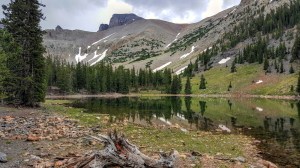Examining the Cultural Shifts Caused by Tourism in Local Communities

Tourism has become a global phenomenon, with millions of people traveling to different destinations each year. While tourism brings economic benefits and opportunities for local communities, it also has a significant impact on their cultural fabric. This article will explore the various ways in which tourism can lead to cultural shifts within local communities.
Preservation vs. Adaptation: Balancing Tradition and Modernization
One of the most significant impacts of tourism on local communities is the tension between preserving traditional cultural practices and adapting to meet the demands of tourists. As more visitors flock to a destination, there is often a growing pressure for locals to showcase their customs and traditions. While this can be an opportunity for cultural preservation, it can also lead to commodification and dilution of authentic practices.
Local communities must strike a delicate balance between preserving their heritage and adapting to cater to tourists’ expectations. This involves carefully selecting which aspects of their culture they choose to showcase and finding ways to educate visitors about the significance and meaning behind these practices.
Changing Economic Landscape: Opportunities and Challenges
Tourism brings economic benefits such as job creation, increased income, and business opportunities for local communities. However, these changes in the economic landscape can have both positive and negative effects on the local culture.
On one hand, increased income from tourism can support local artisans, craftsmen, and performers who play a vital role in preserving traditional arts and crafts. On the other hand, tourism-driven economies may lead to an overemphasis on profit-making activities at the expense of traditional livelihoods.
Furthermore, as tourist dollars flow into a community, there may be an increasing demand for Western goods and services. This can result in a shift away from locally produced goods towards imported products that cater more specifically to tourists’ tastes.
Social Transformation: Interactions between Locals and Visitors
Tourism brings people from diverse backgrounds together, fostering cultural exchange and understanding. However, this also means that local communities must adapt to the presence of visitors and their different cultural norms and values.
The influx of tourists can lead to changes in social dynamics within local communities. For example, locals may alter their behavior or dress to cater to tourist expectations. This can result in a loss of authenticity and a shift away from traditional ways of life.
Additionally, increased tourism can put pressure on local infrastructure such as transportation systems, healthcare facilities, and public spaces. Locals may need to adapt their daily lives to accommodate the needs of visitors, which can lead to changes in community dynamics and social interactions.
Environmental Impact: Balancing Conservation with Tourism
Tourism often relies on the natural beauty and resources of a destination, leading to potential environmental impacts. Local communities must find ways to strike a balance between promoting tourism while preserving their natural environment for future generations.
Over-tourism can result in overcrowded attractions, pollution, habitat destruction, and strain on natural resources such as water and energy. Local communities must implement sustainable practices that minimize these negative impacts while ensuring the long-term viability of their tourism industry.
Conclusion
Tourism undoubtedly has a significant impact on local communities’ cultural fabric. It brings economic opportunities but also poses challenges in preserving traditions while catering to tourist demands. Finding the right balance between preservation and adaptation is crucial for ensuring that local cultures thrive alongside tourism development. By implementing sustainable practices and promoting cultural education among visitors, local communities can navigate the impact of tourism while maintaining their unique heritage for generations to come.
This text was generated using a large language model, and select text has been reviewed and moderated for purposes such as readability.


